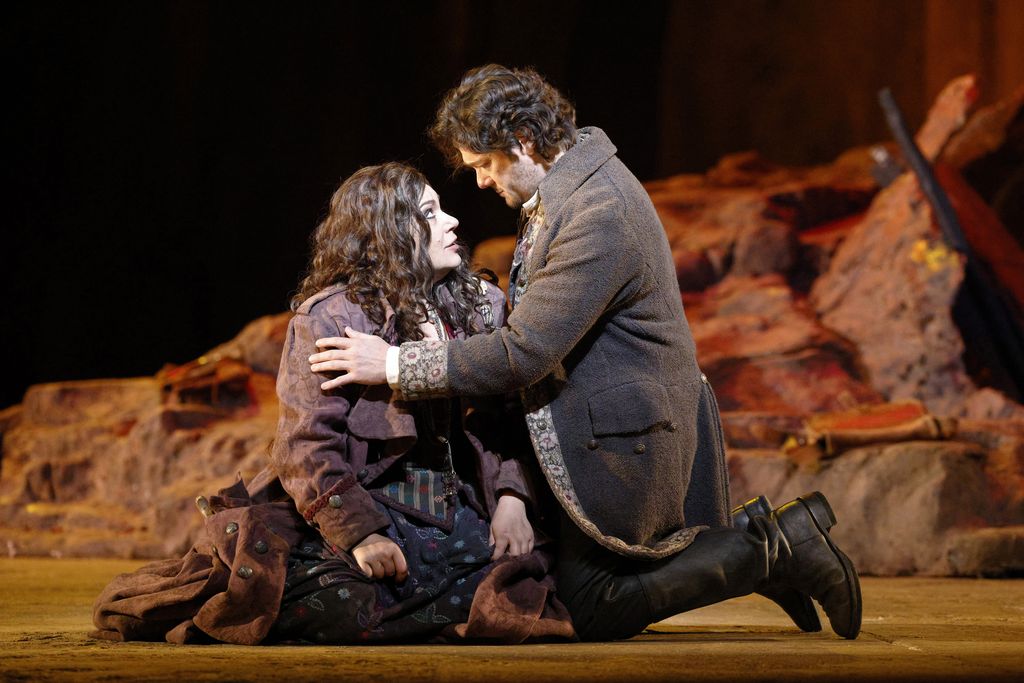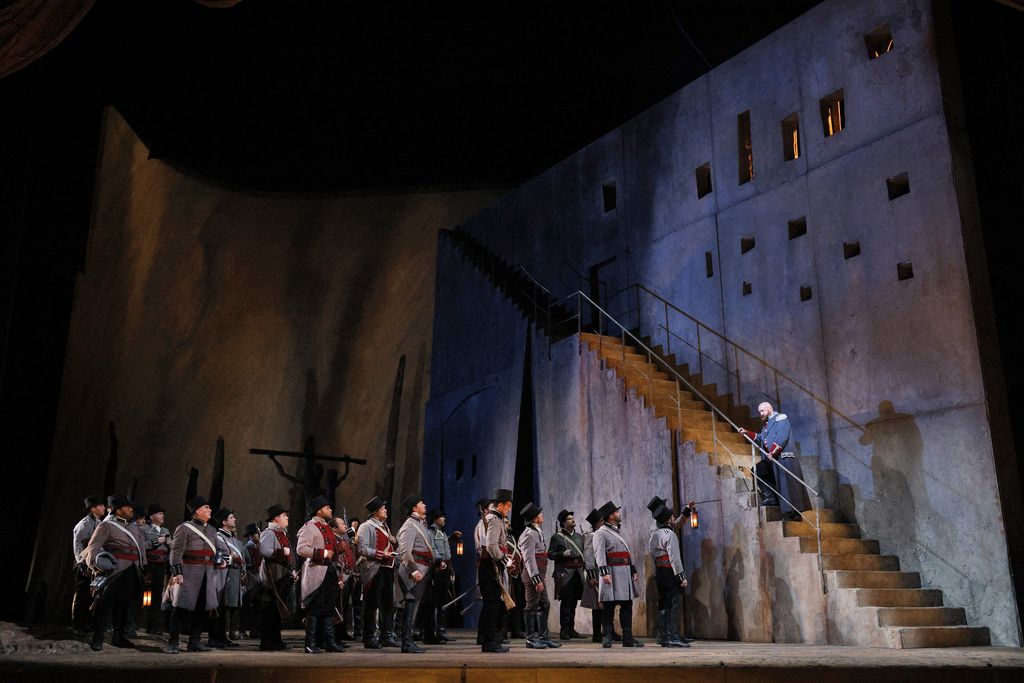In this case, McVicar succeeds in making an utterly far-fetched and bizarre plot attractive, which has sometimes justified productions in which the characters have been rendered in a parodic, almost detective-novel style. On the contrary, the director makes the plot credible and highlights, through gestures and movements (managed by Colm Seery), the different psychologies of the characters, thanks also to a particular attention paid to the acting. Violence, intrinsic to the libretto, is often underlined by murders, duels and fights. It's interesting that, in addition to the antagonism between Luna and Manrico (here rendered with almost mirrored feelings, as we'll say later when talking about the singers), there's a moment when two gypsies clash : they belong to the same group, the two gypsies, perhaps even brothers, and yet they fight, as happens (unconsciously) to the two protagonists, who are also brothers. History repeats itself, in every social class, in every country in the world, and even in every family : hatred prevails over love, vengeance over affection. A personal and family tragedy becomes a metaphor for the tragedy of an entire people and successive generations.

Charles Edwards' imposing set features a revolving stage, with a spinner at its base, which allows scenes to be rotated by changing scenery fluidly and dynamically, or even to see two scenes at the same time. The only fixed element, at far left in the half-light, is a series of gallows, or crucifixes, from which hang burnt or half-mummified corpses : not only Azucena's mother, but other bodies, other corpses, other murders. All of this gives the whole a great visual impact and meaning, depicted with great skill, also allowing salient elements to emerge…

Brigitte Reiffenstuel's costumes vaguely situate the action in the 19th century, and have a precise symbolism, such as the great cloak that Manrico places on Leonora's shoulders and which the Count then takes off. The nineteenth century evoked by the show is in fact not precisely historical, and the clashes alluded to are more metaphorical, so that even the libretto's Spain sticks to Goya references rather than specific contexts, which makes the staging, perfectly lit by Jennifer Tipton, much more appealing.
Eun Sun Kim's direction is convincing and committed. The Korean woman, Music Director of the San Francisco Opera draws nuanced sounds from the orchestra ; the gesture is precise and punctual to illustrate each moment of the score ; the greatest merit we have noted is the strong personal touch in certain passages, which increases their poignancy from a dramatic point of view : far from too much gentleness and excess of composure, here are contrasts, an almost barbaric harshness, a vibrant tragedy. And Azucena on the verge of madness.…

Over the course of the show, Angel Blue manages to make her way towards a Leonora of her own, naive and amorous, very intense, magnetic in her stage presence and sensual in her distinctive voice ; convincing in moments of lyrical retreat, she finds less interpretative ease when the director asks her to emphasize the fractures and lacerations of the character.

Arturo Chacon-Cruz's indisposition had been announced, but the tenor confirmed his usual excellent control and skilful use of his voice, even though it is not large. Although the extreme explosion of the "pira" is not perfectly sustained, this is hardly noticeable in context and the singing is softened or incisive, as required, with great musicality, which is precisely what befits a troubadour and all combined with incredible acting. So the audience's applause is particularly welcome and well-deserved.

George Petean, making his San Francisco debut, is an intelligent, ductile performer, backed up by good character-building technique, which more than makes up for a voice that isn't huge ; the delivery is solid and the baritone has good breath control, but above all he works with a chisel, respecting all Verdi's invitations to nuance, to sing softly, to lighten up. The result is a Conte di Luna different from the usual one, which, by emphasizing the piano, nuances and soft tones, appears as a young knight in love and full of passion, prodigal of sensual impulses, in need of reciprocal affection, very similar to Manrico, whom he doesn't oppose but rubs shoulders with, or rather who opposes him politically and socially but is close to him from a sentimental point of view, both being in love with the same woman. This is an excellent and theatrically effective idea, suggesting new points of view in the trio of protagonists and emphasizing Azucena's madness.

Ekaterina Semenchuk is Azucena, her ideal role, long familiar and accentuated by the staging and orchestral direction : the voice with its dark timbre and particularly worked vocal line reflects the mourning scenes of the murders in the background and hints at an atavistic thirst for vengeance innate in man ; this powerful voice becomes fearsome, almost "infernal", and a shiver runs down the spectator's spine.
Robert Pomakov's luxurious Ferrando is of a very high standard, effectively introducing the story with his authentic bass voice. Mikayla Sager's Inez accompanies very well the protagonist. Bojan Knezevic's old gypsy, Kevin Gino's messenger and Edward Graves' Ruiz complete the cast adequately.

